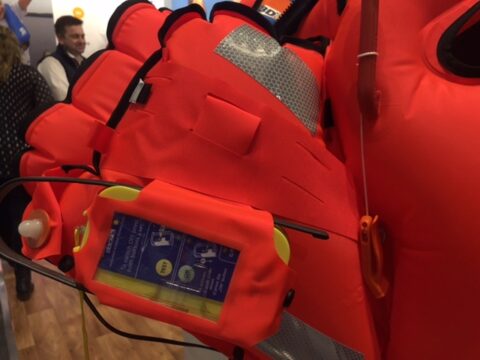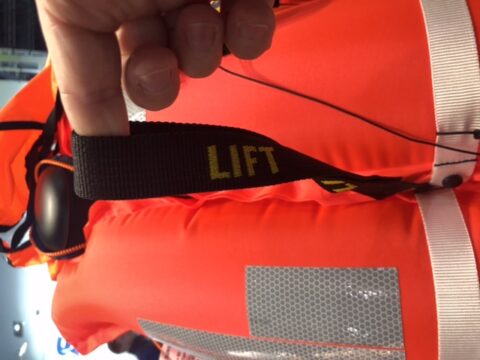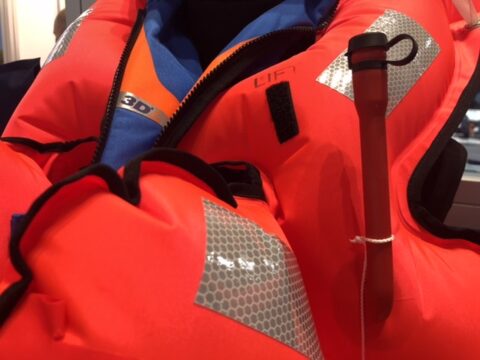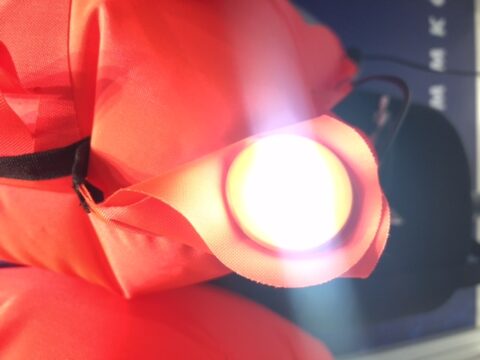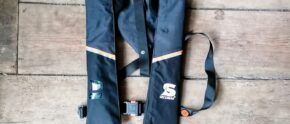Find the right life jacket
Whether for anglers, sailors, houseboat or motorboat captains: life jackets are the personal rescue angel in an emergency. But which vest is the right one – together with the experts from Secumar we clarify.
In which operational area am I on the road?
The first question when choosing the right life jacket should be: in what area of use am I traveling? Am I traveling on inland waters, near shore, or even offshore? The type of floating vessel also places certain demands on the vest: SUP, canoe, fishing boat, dinghy, sailing or motor yacht – the more precisely the place of use and the vehicle can be named, the clearer the decision on the right life jacket for my purposes.
What clothes do I wear under the life jacket?
One’s own body weight (for adults) does not play a role in the choice of buoyancy class, contrary to the opinion often heard from recreational captains – in the water, the 150-kilo sumo wrestler is in the same situation as the flyweight ski jumper.
What is decisive for the choice of the buoyancy class of my life jacket?
In fact, the clothing worn under the life jacket is decisive for the choice of buoyancy class. A fair-weather trip in the Mediterranean with swimming or light sailing gear or a heavy-weather mission in colder climes with heavy oilskins, sea boots & Co. – it depends on how much buoyancy a lifejacket must have.
The life jacket experts at Secumar offer an online advisor on their website for finding the right vest.
What buoyancy class should my life jacket have?
When choosing the right buoyancy class for my lifejacket, the system of performance classes as described in the DIN EN ISO 12402 standard can be a good guide. Various performance criteria are defined here, such as minimum buoyancy or turning behavior.
What are the buoyancy classes for life jackets?
50N – Buoyancy aids
Vests with 50 Newton buoyancy are lightweight and thus also offer optimal wearing comfort for SUP riders and paddlers, for example. However, due to their low buoyancy, they are not impregnable and are therefore explicitly not a life jacket. Thus, the vests are suitable for experienced swimmers who are near the shore or close to possible helpers.
100N – Life jackets
Vests with 100 Newton buoyancy offer similar benefits to buoyancy aids with 50 Newton buoyancy and are therefore particularly suitable for use on inland waters and in protected areas and are, albeit only to a limited extent, safe against passing out.
150N – Life jackets
Life jackets with 150 Newton buoyancy are also suitable for use on the high seas and in extreme conditions, and are almost completely impregnable. However, fainting safety can be negatively affected by, for example, wearing heavy oilskins and foul-weather clothing, to the point of failure of this feature.
275N – Life jackets
Life jackets with 275 Newton buoyancy are suitable for use on the high seas in extreme conditions, and are powerless-proof in almost all applications, even when wearing heavy oilskins or foul-weather clothing.
What accessories are available for the inflatable life jacket?
Reflective stripes on the life jacket
Each life jacket should be equipped with reflective strips, these provide better visibility.
Signal flute on the life jacket
To provide attention and help in case of emergency, a signal flute is a mandatory accessory of any life jacket.
Mouth valve on the life jacket
The mouth valve on the lifejacket is intended for re-inflation or deflation of the float and is an integral part of every inflatable lifejacket.
Recovery belt on the life jacket
The recovery belt should not be missing from a good life jacket, it helps with recovery and securing.
SOLAS marine emergency light on the life jacket
A SOLAS marine emergency light is an optional accessory of a life jacket and is especially recommended for use on the high seas. The light is automatically activated when the vest is deployed and helps in the search of shipwrecked persons.
Spraycap on the life jacket
The spraycap is an optional accessory on the lifejacket, keeps the head warm and protects the casualty from spray, preventing drowning from flying water as well as from being washed over by waves.
Pocket for marine beacon on the life jacket
In particular, life jackets for offshore use often have a tab with pocket for attaching AIS or PLB marine beacons. It should be noted that not every marine transmitter fits into every life jacket. The respective manufacturers provide information about the compatibility of the devices.
The D-ring on the life jacket
The D-ring on the life jacket is important for crews of sailing yachts. The D-ring allows sailors to pick their way in during heavy weather or when working outside the cockpit, preventing them from going overboard. The D-ring is in most cases made of metal, but is also offered in a textile “soft variant” to improve wearing comfort.

